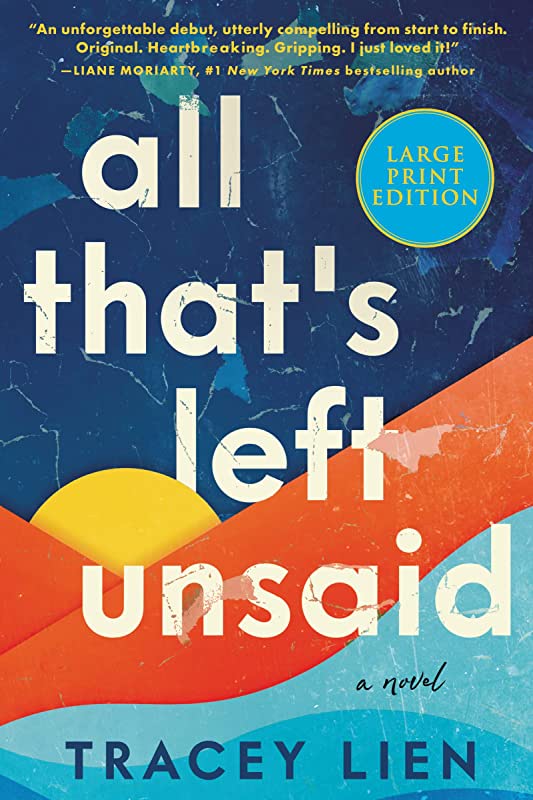
Debut author Tracey Lien’s novel, All That’s Left Unsaid, uses the frame of a detective novel to richly explore the aftermath of a violent killing that leaves a community reeling. Readers may initially anticipate a traditional mystery, but as the novel unfolds, they will discover a compelling family drama and a thought-provoking examination of an immigrant community’s doomed pursuit of the Australian dream.
The novel is set in Cabramatta in the 1990s, the “Little Saigon” of Sydney, during the height of the suburb’s heroin epidemic. The sudden brutal killing of a high-achieving Vietnamese high school senior nearly on his way to fulfilling his parents’ dreams is met not with outrage from the community, but a disconcerting silence instead. For a suburb made up of Vietnamese refugees dealing with past traumas of their own, directly addressing the murder is seen as both dangerous and taboo. The first sentence of the novel, after all, relates how “the details of Denny Tran’s death were so violent that most people in Cabramatta were too spooked to attend his funeral.”
Amid this tragedy, the novel’s primary narrator, the deceased boy’s sister Ky, a reporter, sets out to uncover her brother’s killer and bring them to justice. As Ky delves deeper into her investigation, she uncovers her family’s complicated past and gains a deeper understanding of the ways in which her community’s dreams have been suppressed. After interviewing her brother’s best friend, a witness to the crime, Ky sees a connection between the lies that some of the characters tell about her brother’s death and the lies she herself perpetuates to protect her parents:
“…hadn’t she kept every hurt she’d ever experience from her own parents?… Because she had to help them believe that their sacrifices had paid off. Because she had to convince them that they’d done right by their children, that no one had failed, that no one had been let down, that they were one of the lucky ones who’d followed the path and found success. It made perfect sense.”
Ky’s contemplations, along with her complicated relationships with her parents, her younger brother, and her troubled best friend Minnie, form the driving force behind the story’s progression and serve as a thematic examination of the shattered dreams of immigrants in Australia.
Lien renders an evocative Cabramatta, authentic, and realistic. It is shown as downtrodden and impoverished, yet also a place of touching childhood moments, a place steeped in Vietnamese culture and food. The high school grounds are peppered with “serial truants standing in the parking lot, oblivious to teachers trying to leave”; the same high school holds a class of students that refused to let the teacher “move on with her lesson until she could pronounce phở correctly”; an altar in a Vietnamese family’s home has “oranges shriveled on their plates”; and a restaurant that also serves as a wedding venue is filled with guests who become wild when the wedding singer switches to Vietnamese versions of traditional songs. The novel captures the aspirations of Vietnamese families striving for success while also exposing the competition among them. As Ky’s mother observed about a friend’s family, “We are poor too, but we never go hungry. You can be poor and full, or poor and hungry… that family, they are not like us.”
The book’s greatest strength is its richly drawn and diverse cast of minor characters, many of whom take turns briefly narrating the story. The well-intentioned, caring, but ultimately ineffective white school teacher, the Vietnamese drug dealer that’s also a gifted student, the auntie wedding singer who yearns for her childhood home in Saigon, are all portrayed with complexity and all given a momentary spotlight to share their reasons for remaining silent. Their presence adds depth to the sense of loss felt in the community and heightens the frustration at Cabramatta’s missed opportunities for redemption and resolution.
While the build-up of the mystery was patiently done, the novel did hurry slightly towards the conclusion. When the reveal of the killer came late in the novel, it brought about an untangling of the plot in rapid pace compared to the patient rendering of the world in sections previous. This later chunk of the narrative could benefit with a bit more time to better reveal these characters and their roles in the story. One central figure, for example, was shown only partially via others’ descriptions and others’ retellings, when his full narrative voice would have lent more depth to Lien’s ideas.
These are minor criticisms, however. All That’s Left Unsaid is worth reading for its masterful portrayal of an Australian suburb, depicted with both affection and candid honesty about its dangers. As the mystery unfolds and the final narrator (a fitting choice) delivers the novel’s closing thoughts, the story’s tone mirrors Ky’s bitter feelings of disappointment and loss. Lien’s book serves as a sobering reminder of the failure of the grand Australian dream, its enduring allure and its detrimental impact on a community.
William Morrow, $27.99
Tuan Phan is a Vietnamese American teacher of Literature, living in Saigon, Vietnam. He was born in Vietnam, left the country in 1986 with his family as part of the second wave of boat refugees, and has returned to reconnect with his birth country. His memoir, Remembering Water, will be published in late February by Hidden River Press. You can connect with him on his Instagram account @tuanphan225.


